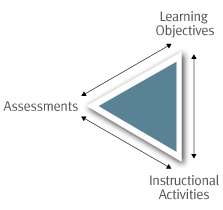Using Rubrics
(From Teaching with Writing: A Conversation Series)
Rubrics can make everyone groan. They seem too rigid, too directive, and often are overly complicated. They often are written and used as hard and fast "rules" for "objectively" grading student work. Did they meet all of all, most, some, or almost none of these parameters?
While rubrics help instructors evaluate the same aspects of an assignment over a set of class papers, rubrics for written assignments will inevitably include subjective assessment. After all, there are many ways to persuade readers, describe processes and results, or support claims with a variety of sources.
Rubrics, literally and practically allow instructors to communicate their expectations to students about what finished assignments should include for students to earn the highest grade or number of points for a given assignment.
Additionally, though, rubrics:
- Create the best conditions for equitable grading across students’ submissions
-
Help mitigate instructors’ unconscious biases
-
Give students confidence that instructor assessment is intentional, consistent, and fair
Rubrics come in two flavors--analytic or holistic--and a few styles--grid, numeric, or hybrid. The University of Michigan's Sweetland Writing Center site on Giving Feedback on Student Writing (Links to an external site.) offers a taste of several rubric styles. Some instructors also use feedback forms like this one (Links to an external site.) to go with their rubric of choice. Regardless of their style, is that they are constructed in a way that does not frustrate or confuse instructors and students.
Remember: rubrics aren’t just a great tool for assessing student work and learning. They are immeasurably usefulness in prompting us to reflect on our:
-
Assignment expectations
-
Teaching transparency
-
Assignment/learning outcome alignment.
For more interesting and helpful information about rubrics, read Berkeley Center for Teaching and Learning's page on Rubrics (Links to an external site.). This site has several additional resources you might enjoy.
To explore these ideas, try this:
-
Pick an assignment in a current course and note the specific learning outcomes for the course that this assignment fulfills
-
List/concept map/write out what you expect/want to see students produce when they turn in this assignment and rank those expectations from most important to least important.
-
Decide if this is a formative assignment/assessment, or a summative assignment/assessment, then choose a category and style of rubric you think works best for what you want to communicate to students and what will be helpful to you to understand what students have learned and for giving feedback to them.
-
Draft your rubric language, making notes and/or asking questions in the margins in track changes, so that you can ask a colleague to look at your draft and talk through your concerns about your draft.
The goal here is to take a reflective look at the efficacy of your teaching process, assignment-learning outcome alignment, and assessment transparency. In the process, you are creating a tool that will help students self-reflect on their learning rather than read your mind, and help you provide them with feedback that increases their understanding of what they need to improve.
Useful Sources:
Bean, John. Engaging Ideas: The Professor’s Guide to Integrating Writing, Critical Thinking and Active Learning in the Classroom. San Francisco: Jossey-Bass, 2011.
Gottschalk, Katherine and Keith Hjortshoj. The Elements of Teaching Writing: A Resource for Instructors in all Disciplines. New York: Bedford/ St. Martin’s, 2003.
Soliday, Mary. Everyday Genres: Writing Assignments Across the Disciplines. NCTE/CCCC and Southern Illinois University Press, 2011.




